It is estimated that up to 40% of the 77 million children in the world who do not attend school are in countries affected by conflict (O’Malley, 2007). Afghanistan’s education sector has been besieged by violence for nearly 20 years since the 1996 political takeover by the Taliban. Though their official reign ended in early 2002 as Western military forces pushed them from power in the capital of Kabul, the Taliban have managed to maintain a bloody grip on the ideal and implementation of education for all in Afghanistan.
Testament to their continued and relentless push to establish control over educational opportunity is a Human Rights Watch report documenting 204 attacks on teachers, students and schools from January 2005 to June 2006, a time when insurgent forces were supposedly ineffective due to Western forces in country (O’Malley, 2007). Foreign aid and assistance poured into the country in the post-Taliban era, estimated to total almost $72 billion. Of that, over $256 million was spent on education initiatives (International Crisis Group, 2014). With this assistance came education aid workers, who became a target for Taliban violence throughout their time in the country. The Aid Worker Security Database (AWSD) tracks major attacks on aid workers around the world and has operated since 1997. Since its beginning, the evidence suggests that violence against aid workers has been on a steady upward trend, but since 2006 the increase has been driven by just six countries, which account for nearly 75% of all attacks worldwide. Afghanistan is one of those countries and in the four year period from 2006-2009, 28% of all attacks against aid workers around the world were perpetrated here (Harmer, Stoddard & Didomenico, 2011). The violence of choice in Afghanistan has been burning down schools supported by explosions and rocket attacks (O’Malley, 2007).
In 2009, a study conducted by CARE on behalf of the World Bank indicated a grim reality regarding the danger of working in Afghanistan’s education sector, where schooling in general but more specifically the perception of Western influence in its implementation, particularly for girls, is often seen as an unwelcome incursion and threat to indigenous culture, imposing modernity through alien means and undermining strict religious beliefs. This report counts 230 people killed in education-related attacks in Afghanistan from 2006-2008, individual security incidents estimated at over 1,150 during that time with at least one school per day being attacked in 2006 alone (O’Malley, 2007).Violence continued to increase in 2009, with education killings doubling throughout the nation. According to CARE, not only did violence rapidly escalate, with 141 students and teachers being killed during the year, but the by-product of education disengagement was also startling. In southern provinces, over 650 schools were closed, 173,000 students dropped out, and as many as 81% of the schools were closed. Then Afghan President Karzai reported that in 2006, 100,000 children who had attended school in 2003-2004 were no longer attending (O’Malley, 2007). Across the country, the opportunity for humanitarian aid in general was severely curtailed by violence with over half of the 34 provinces determined to be off-limits for international assistance workers due to security concerns. (Harmer, Stoddard & Didomenico, 2011). In total, it is estimated that over 340,000 students could not attend school in 2009 due to some level of insurgent attack on education, both on people and facilities throughout the country (International Crisis Group, 2014).
To further illustrate the continuing frail security situation, consider that, as the time to the departure of Western forces in 2014 wound down, education attacks did not abate and, in fact increased in several areas of the country, specifically in Kabul and to the east in the provinces of Wardak, Logar, Khost, Laghman, Kunar and Nangarhar. The UN reported more than 1,000 attacks on education in 2009-2012, including schools being set on fire, suicide bombings and remotely detonated bombs, killings of staff, threats to staff and abductions (GCPEA, 2015).
To put this into the perspective of gender, single-sex girls schools and female students have been the most highly targeted, and those attacks have been carried out not by common street criminals or the gangs which roam the streets and also present a legitimate security threat, but by armed opposition insurgent groups, almost exclusively basing attacks on centuries of patriarchal hierarchy and deeply-held Taliban religious beliefs that girls should not leave their homes and education is a corrupting influence. Though violence is carried out by Taliban supposedly following Islamic law, the head of UNICEF in Kabul stresses that according to Islamic guidance, education is a must for both males and females (O’Malley, 2007).
One overarching difficulty in the provision of education in areas of emergent need is that, by the nature of emergency itself, education is lower on the priority scale than life-saving actions such as food, water and medical interventions. Violence against teachers, students and aid workers, creates a compromising and debilitating cycle which drives education assistance away until security concerns can be mitigated. Security is paramount, takes valuable and limited economic resources, and can be complicated if created through a strong armed presence within the spectrum of education aid provisioning. That fact notwithstanding, Afghanistan utilized the Provincial Reconstruction Team (PRT) model of community building, which often created dangerous associations of humanitarian and political/military actors. Research suggests that a low-profile, low-intensity approach divorced in practice and, as much as possible, in perception from official government could yield results while better avoiding violent responses. One model that has seen some success is the community-based school, an approach that has existed in Afghanistan for over 60 years (O’Malley, 2007), and provides exactly the perceived separation from government and Western influence that places the schools as less of a threat to existing religious and patriarchal power structures. To reduce the level of violence and encourage attendance, UNICEF is helping Afghans set up smaller, community schools not tied to broad government control and some villages are resorting to home schools, which have proved effective and less costly. This low-profile, low-intensity approach seems to have yielded results with 90% of home-school students passing exams at year end.
As noted, while Western forces have pulled out, insurgent threats have increased and women’s roles in negotiations with Taliban over governance in largely restricted to community outreach. It is important to remember that in pre-Taliban Afghanistan, though marked with deep-rooted conflict, 70% of teachers, half of civil servants and 40% of doctors were women. In 2000, however, just four years into Taliban control of the country, education for girls was completely suspended and women denied the opportunity to work anywhere outside the health sector. Education was relegated to clandestine operations as Afghan women ran a network of home schools for girls, enrolling almost 134,000 by 2001 (International Crisis Group, 2014). This support helped to grow girls legitimate school access, equaling 40% of student enrollment in 2012 compared to perhaps 3% under Taliban rule. While their rates of primary school enrollment doubled from 40% to 80%, secondary school enrollment increased from 5% to 34%, and high school saw 27.5% of girls enrolled, there remain significant drop-offs as girls get older, with women compromising only about 20% of students at higher education institutions (International Crisis Group, 2014).
While difficulties remain, the turnaround in higher education has been positive. During the Taliban years, there were only six operational universities with a total enrollment of only 4,000 students, all men. By 2006, Afghanistan was operating 13 public universities along with six education institutes enrolling more than 40,000 students nationwide, and as mentioned above, approximately 8,000 women. As late as 2012, there were 100,000 students attending tertiary education (Bohannon, 2012). This is certainly a different picture than in 1996, when universities became battlegrounds and torture centers, the place for intellectuals was non-existent and thousands of professors fled the country (Zoepf, 2006).
The security situation in Afghanistan is fluid, with dynamics across the political and educational spectrums creating an ebb and flow of calm interspersed with violent outbursts as tradition and modernity meet across a widely divided philosophical chasm. The worldwide ambitions of Afghanistan’s students remain in the balance. As security for the country quickly becomes a national responsibility, the youth and especially the girls who will become those learners and leaders still have immense obstacles to overcome.
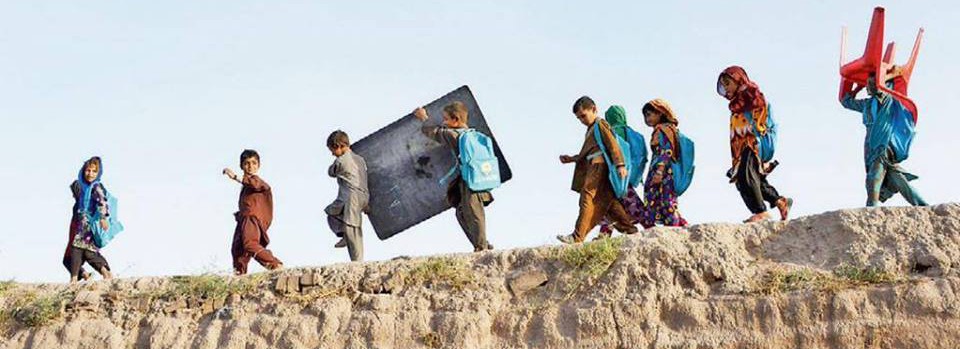
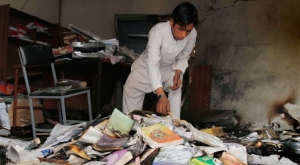
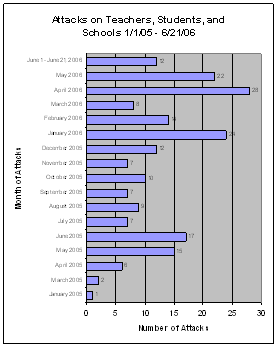
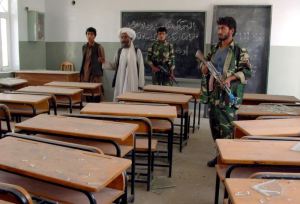

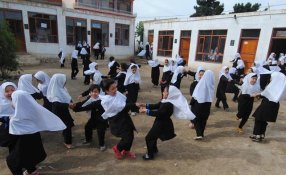
A new book that I could suggest would be(Schools for conflict or peace in Afghanistan by: Dana Burde) is a good book that explains a lot of facts about conflict and education in Afghanistan.
LikeLiked by 2 people
[…] 22nd Jun 20196th Jan 2020 Emmalaine Faurillo Image source: https://afghanistaneducationinconflict.wordpress.com/history-of-education-in-afghanistan/violence-an… […]
LikeLike